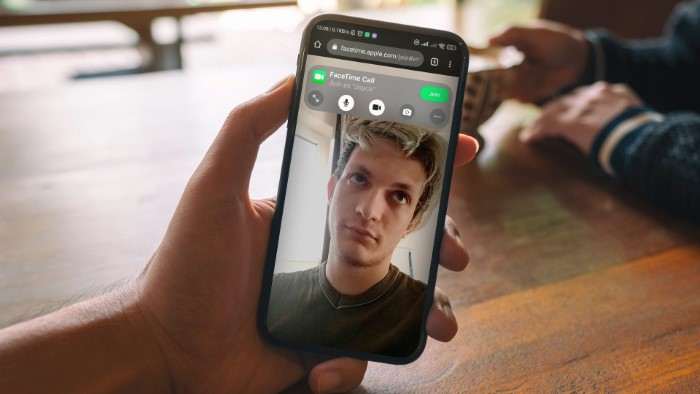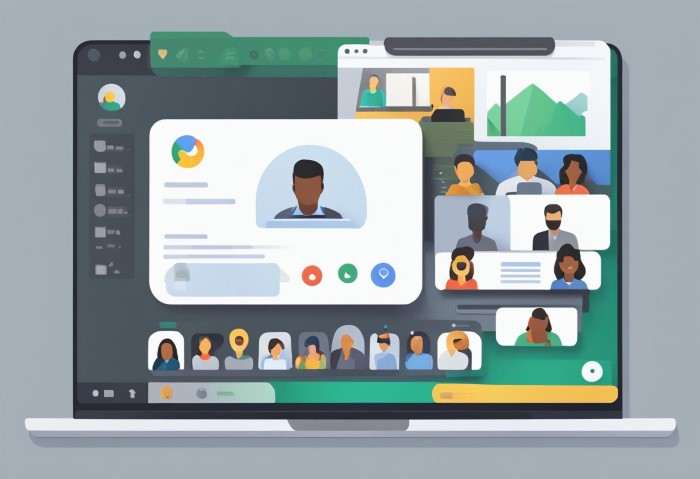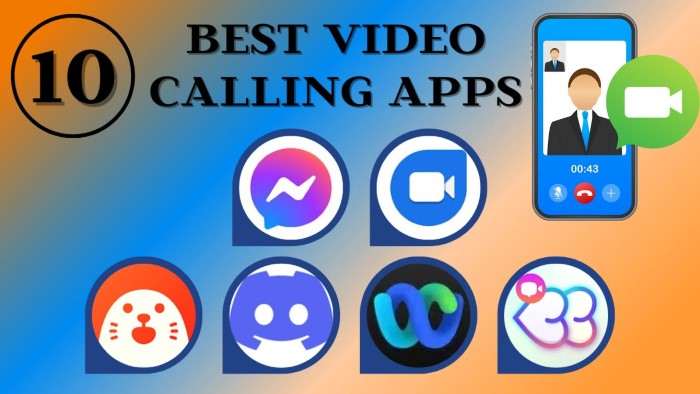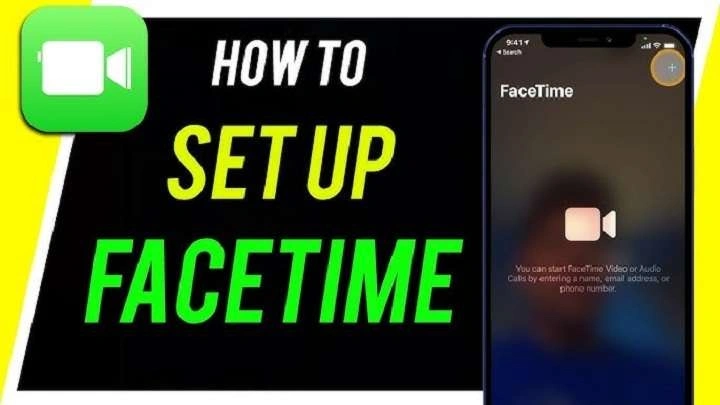Understanding FaceTime and Its Exclusivity

FaceTime is Apple’s proprietary video and audio calling application, first introduced in 2010. It allows users to make video calls over Wi-Fi or cellular data between iPhones, iPads, and Mac computers. FaceTime’s integration with Apple’s ecosystem ensures high-quality calls and a seamless experience, leveraging the brand’s advanced technology and security measures.
FaceTime’s Unique Features
FaceTime offers several features that enhance the video calling experience:
- High-Definition Video: FaceTime supports high-definition video calling, ensuring that users enjoy clear and sharp visuals.
- End-to-End Encryption: Apple prioritizes user privacy with end-to-end encryption, meaning that only the participants in the call can view the video and audio.
- Integration with Apple Devices: FaceTime is built into iOS and macOS, allowing users to initiate calls directly from their Contacts app, Messages, or through Siri.
- Group FaceTime: With Group FaceTime, users can have video calls with up to 32 participants, making it perfect for family gatherings or team meetings.
The Challenge for Android Users
Android devices, being part of a different ecosystem, do not natively support FaceTime. This exclusivity can be a challenge for users who want to connect with friends or family who are on iOS devices. As a result, Android users often seek alternative solutions to bridge this gap.
Exploring Alternatives to FaceTime on Android
While FaceTime itself is not available on Android, there are numerous alternatives that offer similar functionalities. Here are some of the most popular options:
Key Features of Zoom
- High-Quality Video and Audio: Zoom provides HD video and clear audio, making it suitable for both personal and professional calls.
- Meeting Recording: Users can record their meetings for later viewing, a feature especially useful for business meetings and webinars.
- Virtual Backgrounds: Zoom allows users to set virtual backgrounds, adding a touch of creativity to their video calls.
- Breakout Rooms: This feature is ideal for group meetings, enabling participants to split into smaller groups for focused discussions.
Google Meet: Integrated and User-Friendly

Google Meet is another excellent alternative, particularly for those who use Google’s suite of services. It’s integrated with Gmail and Google Calendar, making it easy to schedule and join video calls.
Key Features of Google Meet
- Ease of Access: Google Meet is accessible directly from the web browser or via the mobile app, with no need for additional software.
- Integration with Google Services: Seamlessly integrates with Google Workspace (formerly G Suite), allowing for easy scheduling and joining of meetings.
- Security: Google Meet provides robust security features, including encryption and secure meeting links.
- Live Captions: Real-time captions make meetings more accessible and can enhance understanding during conversations.
Microsoft Teams: Collaboration and Communication
Microsoft Teams is a comprehensive communication platform that combines video calling with team collaboration tools. It’s widely used in professional settings and is available on Android devices.
Key Features of Microsoft Teams
- Integration with Microsoft 365: Teams integrates seamlessly with Microsoft Office applications, facilitating smooth collaboration and document sharing.
- Chat and File Sharing: Besides video calls, Teams offers chat functionality and file sharing, making it a versatile tool for both personal and professional use.
- Meeting Scheduling: Teams integrates with Outlook, allowing for easy scheduling and management of meetings.
- Customizable Workspace: Users can customize their workspace with tabs, apps, and channels to suit their needs.
WhatsApp: The Everyday Messaging App
WhatsApp is a popular messaging app that also supports video calling. It’s widely used across different platforms, including Android and iOS, making it a convenient choice for everyday communication.
Key Features of WhatsApp
- Cross-Platform Support: WhatsApp is available on both Android and iOS, allowing for easy communication between different device users.
- End-to-End Encryption: Ensures privacy and security of calls and messages.
- Group Video Calls: Supports video calls with up to 8 participants, making it suitable for small group conversations.
- User-Friendly Interface: WhatsApp’s simple interface makes it easy to use for people of all ages.
Skype: A Long-Standing Video Calling Platform
Skype has been a pioneer in the video calling space and remains a popular choice for both personal and professional use. It supports video calls on Android, iOS, Windows, and macOS.
Key Features of Skype
- International Calls: Skype allows for international calls to landlines and mobile phones, often at competitive rates.
- Screen Sharing: Users can share their screens during calls, which is useful for presentations and collaborative work.
- Group Calls: Skype supports group video calls with up to 50 participants, making it ideal for larger meetings.
- Integration with Microsoft: As part of the Microsoft ecosystem, Skype integrates well with other Microsoft services.
How to Choose the Best Video Calling App for Android

With so many options available, choosing the best video calling app for your Android device depends on your specific needs and preferences. Here are some factors to consider when making your choice:
User Interface and Ease of Use
The user interface should be intuitive and easy to navigate. Look for apps that offer a straightforward experience without unnecessary complexity.
Features and Capabilities
Consider the features that are important to you, such as group calling, screen sharing, or integration with other services. Make sure the app you choose meets your requirements.
Compatibility with Other Devices
If you need to connect with users on different platforms, choose an app that supports cross-platform communication. This ensures you can stay connected with friends and family, regardless of their device.
Security and Privacy
Security is crucial when it comes to video calling. Ensure the app provides encryption and other security measures to protect your conversations from unauthorized access.
Tips for a Great Video Calling Experience on Android
To ensure you have the best possible experience with video calling on your Android device, consider the following tips:
Ensure a Strong Internet Connection
A stable and high-speed internet connection is essential for smooth video calls. Use Wi-Fi if possible, and make sure your connection is reliable to avoid interruptions during calls.
Use a High-Quality Camera and Microphone
For the best video and audio quality, use a device with a high-resolution camera and clear microphone. If your device’s built-in camera or mic isn’t sufficient, consider using external accessories.
Keep Your Device Updated
Ensure your Android device and the video calling app are up to date with the latest software updates. This helps maintain compatibility, security, and performance.
Choose a Well-Lit Environment
Good lighting can significantly impact the quality of your video calls. Position yourself in a well-lit area to ensure you appear clearly on camera.
Familiarize Yourself with the App’s Features
Take some time to explore the features of the video calling app you’re using. Understanding how to use features like screen sharing, virtual backgrounds, and recording can enhance your calling experience.
Related Post:
How to Stop Spam Calls on Android: A Comprehensive Guide
Sniffies Android App Download: Everything You Need to Know
The Ultimate Guide to Wireless Android Auto Adapters
While FaceTime is not available on Android devices, there are plenty of high-quality alternatives that offer similar functionalities. Apps like Zoom, Google Meet, Microsoft Teams, WhatsApp, and Skype provide excellent video calling experiences and can help bridge the gap between different ecosystems. By choosing the right app and following best practices for video calling, you can stay connected with friends, family, and colleagues, regardless of the devices you use.
So, while you may not be able to FaceTime on Android, you can certainly enjoy a rich and fulfilling video calling experience with the many available alternatives. Explore these options, find the one that best suits your needs, and make the most out of your video communication.


